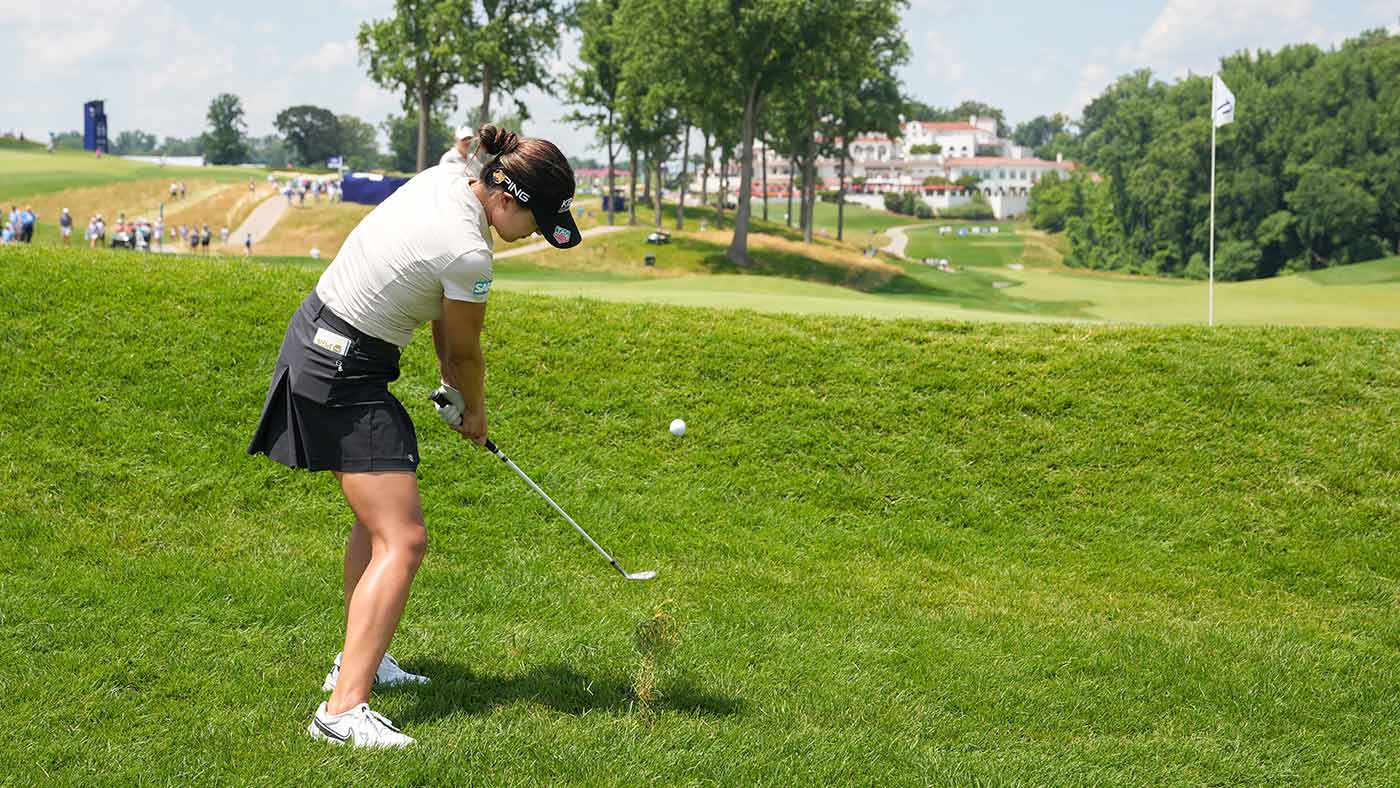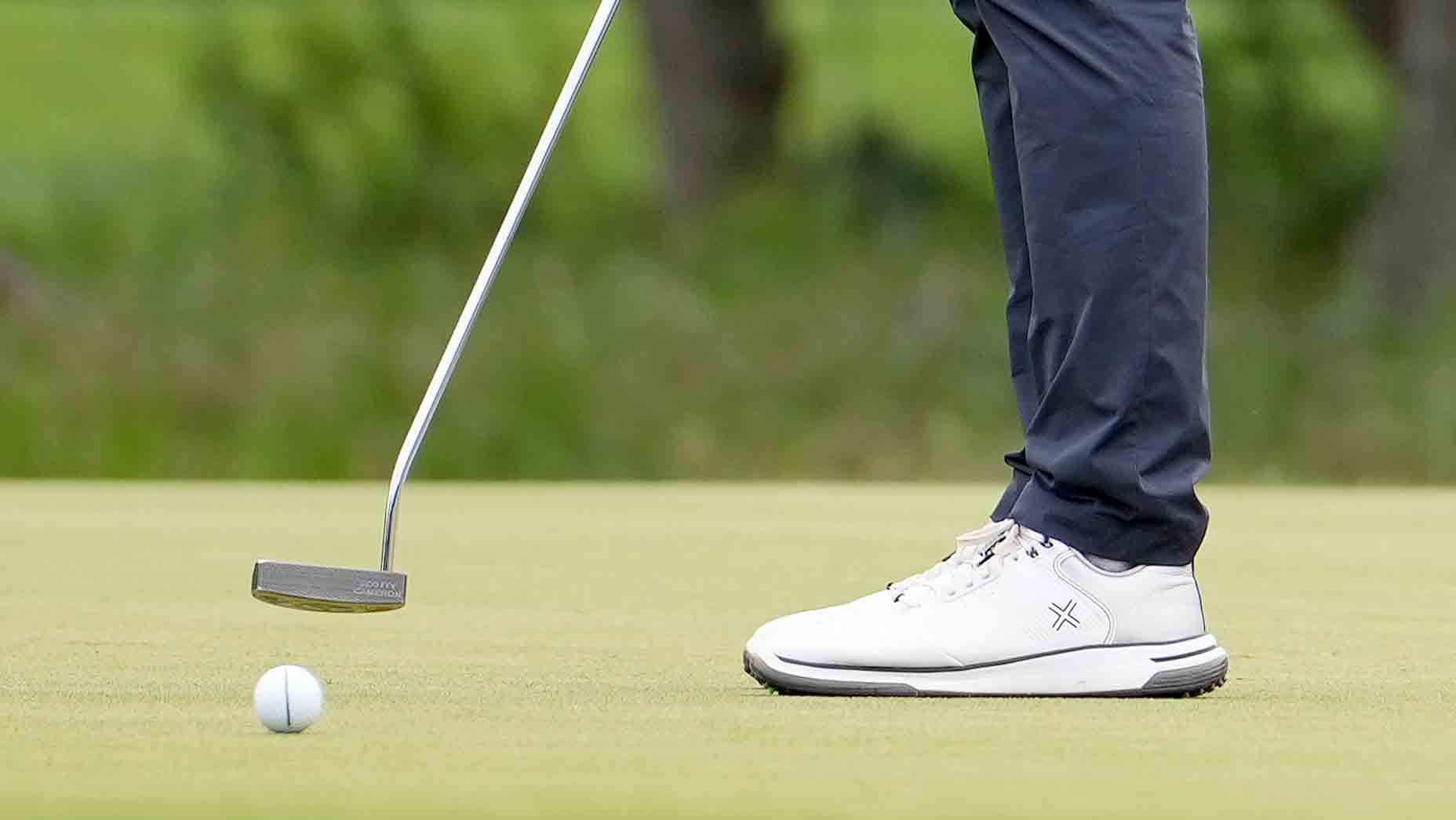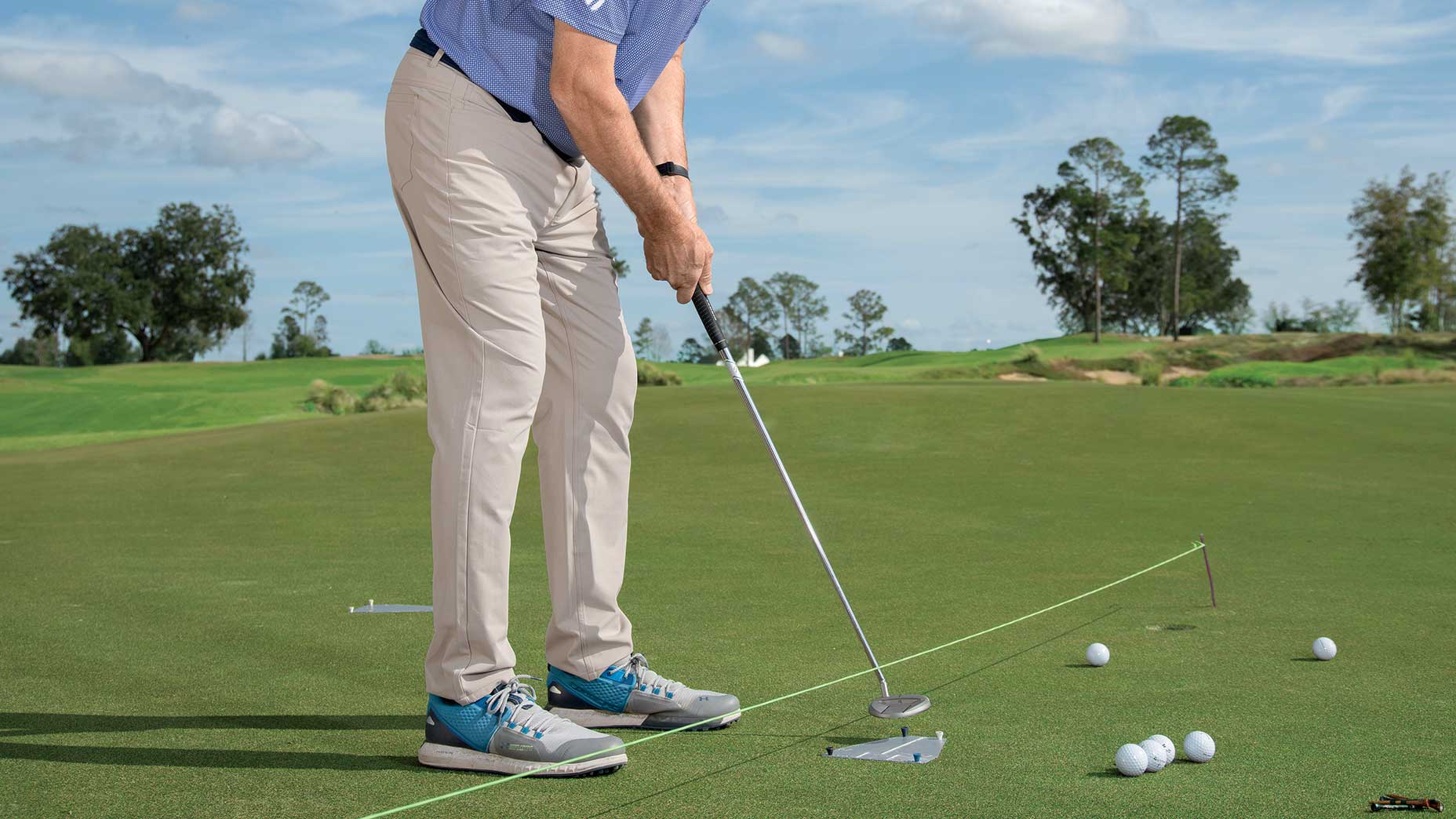Improving your chipping is one of the quickest ways to lower your scores. It’s also one of the most realistic. Anyone can do it. It doesn’t require a lot of speed or strength. All it takes is good strategy and sound technique.
1. Shot selection: chip, not pitch
Saving short-game shots starts with proper shot selection. A chip (more roll than carry; stroke motion) is a much more reliable shot than a pitch (more carry than roll; swing motion). When you have room to roll the ball, you should be chipping instead of pitching. The smaller the stroke, the less chance for error.
2. Aim the face carefully
Your ball will go where you club is pointed at impact, so take care to aim the face correctly. A great way to practice this is to place an alignment aid just outside your ball, pointing at the right edge of your target. Work on aiming the face so that the leading edge is perpendicular to this line. Having this instant feedback right next to your ball will help you learn what it looks and feels like to be aimed correctly.
3. Good posture
The success of any shot starts with solid contact. And the most effective way to guarantee good contact is a setup with proper posture. When you bend forward from your hips with your arms hanging straight down, you don’t just create a balanced address. You also put yourself in a position that your arms will want to return to naturally. This posture also creates a natural path underneath your shoulders for your arms to swing. Starting in balance makes it easier to stay balanced throughout your chipping stroke, producing more consistent contact as well as more reliable carry and roll.

4. Narrow stance
And when I say narrow, I mean narrow, with your feet no more than a clubhead-width apart. This helps eliminate moving parts and body shifting, which minimizes the number of locations where the club could hit the ground.
5. Grip down
Grip down when you chip. It shortens the club and gives you better control. Be mindful to maintain proper posture and balance. The tendency is to bend over more. That’s not the way to go. Instead, simply step a bit closer to the ball, in the same proper posture you’ve been practicing.
6. Control the bottom of the arc
When you make proper contact on a chip, the club should hit the ground on the target side of the ball. To help accomplish this, lean your upper body slightly forward toward the target, with your sternum just slightly ahead of the ball. Start, stay and finish forward when you chip.

7. Thump it!
Chipping is a stroke motion, like putting. But you want to make sure that the club contacts the ground. You’re not just lightly brushing the grass. You’re thumping the turf. When your club hits the ground correctly, it produces a flight-to-roll ratio appropriate to the club and the degree of shaft lean at impact. If you don’t hit the ground, the ball will often roll unpredictably. Good solid contact with a nice turf-thump will help you knock it close. You might even knock it in.
8. Hold finish in balance
What’s true for full swings is true for chipping, too. Holding your finish allows you to check your balance and makes it likely that the ball will roll where you are aiming. It also allows you to check that your stroke was even back and through.

9. Read the green like a putt
A chip spends more time rolling than it does in the air, so treat it as you would a putt by reading the green and the terrain. I like to view the entire area, looking for the high side as the ball will always break away from there. If you’re looking to become more exited, I’m a big fan of approach mode in the Golflogix app (note: Golflogix is owned by 8Am Golf, GOLF’s parent company). Approach mode lets me see the tilt of the green in Tour-level detail, eliminating guess work. I know exactly how the ball will break.
10. To increase distance, change your club not your stroke
When you need to chip it farther, don’t take a larger stroke. Pull a less-lofted club and take the same stroke you always take. This smaller stroke minimizes risk and reduces your margin of air. Even if you don’t strike it perfectly, you still stand a better chance of hitting it close.










